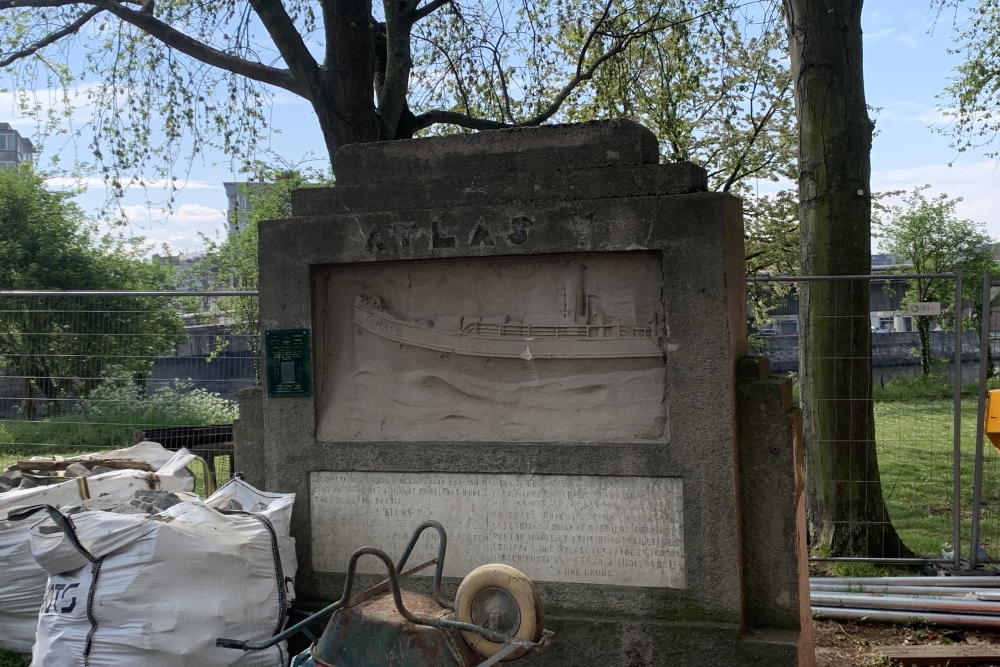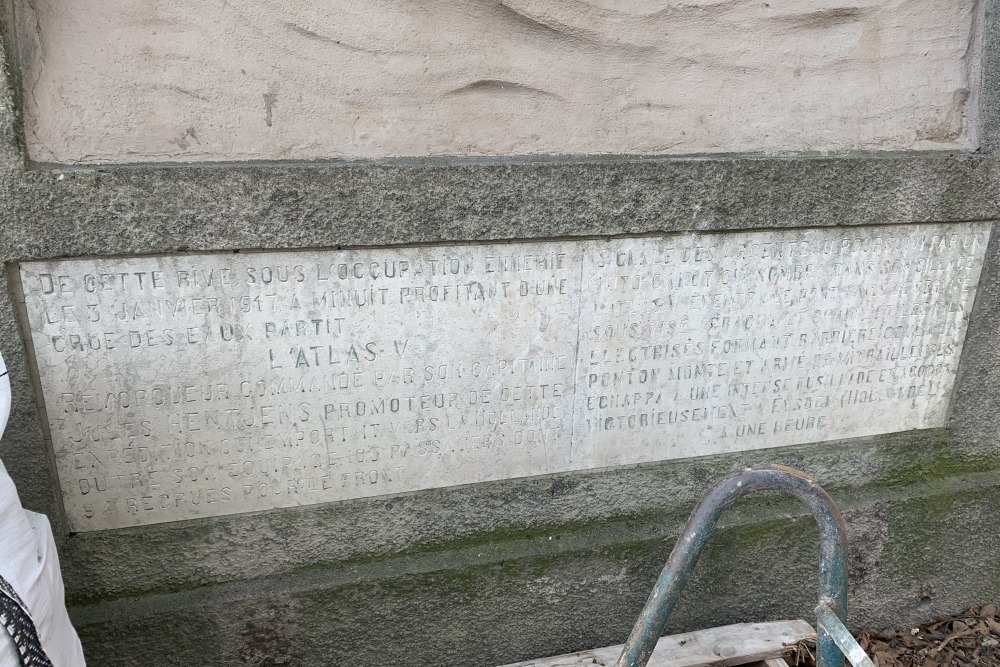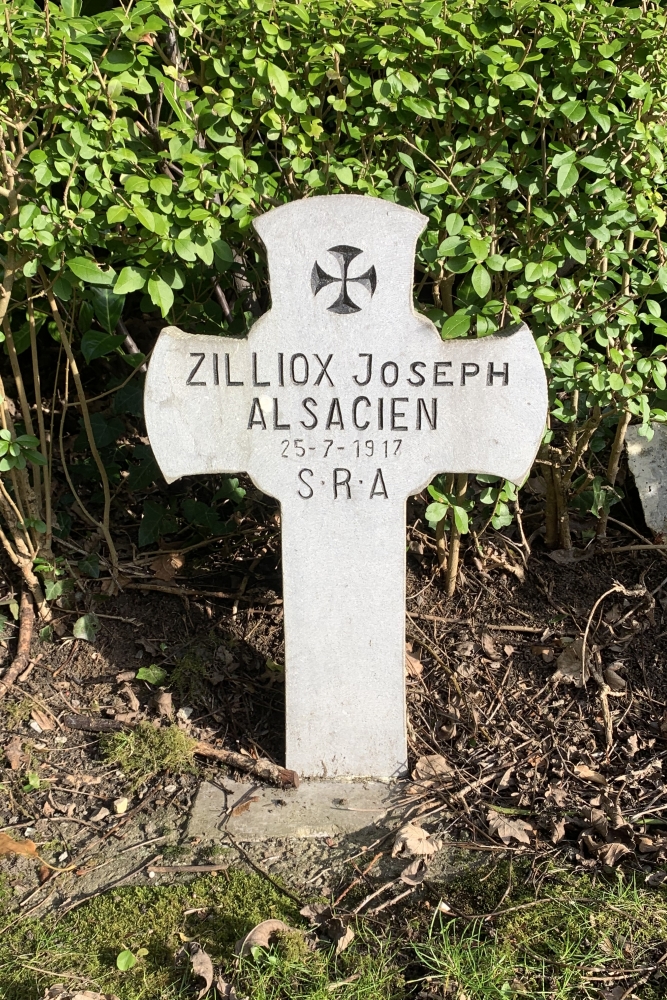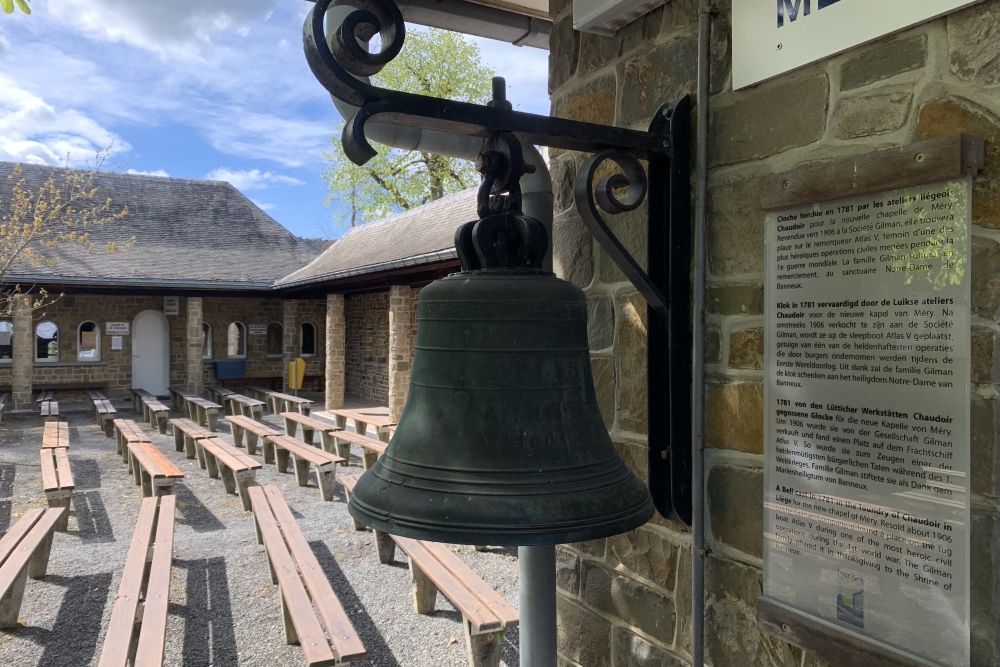Memorial Tugboat Atlas V
This monument commemorates the ‘flight of the Atlas V’. The monument is not located in its original place. It is unclear whether this is due to the construction work near the bridge.
On January 3, 1917, the tug Atlas V managed to escape from Liege to Eijsden in the Netherlands with 103 passengers.
The escape was made possible in part by a German officer, Joseph ZILLIOX, who was originally from Alsace, France (a region that changed hands between Germany and France several times during various wars). During the war, he turned against the Germans and began to focus on acts of resistance. He joined the S.R.A., of which Franz and Jean HENTJENS were also members. After this event, he was arrested and shot on July 25, 1917, at , where his first grave can still be found. After the war, he was reburied in his birthplace in France.
On the way, the boat had to break a steel cable that was under high voltage and stretched across the Meuse River, to stop boats, to reach the border. Along the way, the boat was fired upon by a German patrol boat. Miraculously, this daring escape to Holland succeeded. At one o'clock in the night, the tugboat arrived in Eijsden.
Of the 103 passengers, 94 men could eventually be redeployed to the front. 5 of whom came from Flexe-Slins.
In Eijsden, the refugees were accommodated in the Ursulinen convent and the Eijsden castle, among other places.
Captain of this tugboat was Jules Hentjens.
A memorial sign commemorating this escape has also been erected at the spot where the boat docked in Eijsden.
The green information sign attached to the memorial commemorates three members of the Hentjes family.
HENTJENS Jules, captain of the tugboat, and demolisher of the 1917 barrage.
HENTJENS Franz, lieutenant in the resistance (A.R.A. Agents de Reseignements et d'Action) in World War II and founder of the Francis-Daniel resistance group.
HENTJENS Jean, adjutant in the Resistance (A.R.A. Agents de Reseignements et d'Action) in World War II and member of resistance group BYL.
After the war, the quay just behind the bridge where the ship was docked, and from where it departed, was named after the tug. The bridge has been called “Pont Atlas” ever since.
To be mentioned separately is the bell (ship's bell) that was aboard the Atlas V. It was donated by the Gilman family after its safe passage to the “Sanctuaire de la Vierge des Pauvres, Notre-Dame at Banneux. The Gilman society had purchased the clock in 1906. The Gilman family owned the boat, and after it was docked in Eijsden, later, obliged by the Germans, picked it up there and scraped it back to Liège. Later, the Gilman family donated the bell to the Sanctuary. (photo 5)
Do you have more information about this location? Inform us!
Source
- Text: Ed Lewandowski
- Photos: Ed Lewandowski
Nearby
Museum
Point of interest
- Bunker MeMo 1 and 1 bis - Ile Monsin, Liège
- Mermorial Jackie Jansen, Robermont - Grivegnée (Luik)
- Memorials Municipality Vaux-sous-Chèvremont - Vaux-sous-Chèvremont (Chaudfontaine)
Monument
- Warmemorial at Sainte Foy's Church - Luik
- Memorial Antoine-Adolphe Fonck - Luik
- War Memorial Palais Curtius - Liège
Cemetery
- Cemetery Executed Fort de la Chartreuse - Liège
- Execution site Citadel, l'Enclos des Fusillés - Liège
- Municipal Cemetery Robermont Liège - Grivegnée (Liège)
Remembrance Stone
- Stumbling Stones Rue Devant les Ecoliers 3 - Liège
- Stumbling Stones Rue des Champs 24 - Liège
- Stumbling Stone Rue Matrognard 7 - Liège








